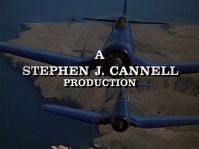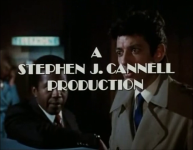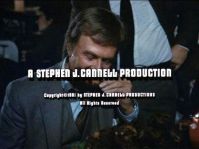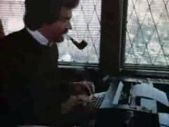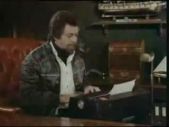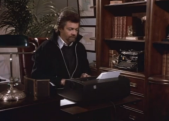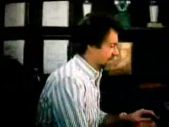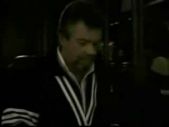Cannell Entertainment
Jump to navigation
Jump to search
The printable version is no longer supported and may have rendering errors. Please update your browser bookmarks and please use the default browser print function instead.
Logo descriptions by Jeffrey Gray and Shadeed A. Kelly
Logo captures by V of Doom, Shadeed A. Kelly, Bob Fish, Eric S., and TheEriccorpinc
Additional edits by V of Doom, bmasters9 and Gabkat2007
Video captures courtesy of JohnnyL80, rhomeo5, and Eric S.
Background: Cannell Entertainment, Inc. (also known as "The Cannell Studios" and formerly "Stephen J. Cannell Productions") was originally started in 1979 by the late writer Stephen J. Cannell after leaving Universal Studios. He was an author and a producer for most shows. In 1986, Cannell with Tri-Star Pictures and Witt/Thomas/Harris Productions created a joint venture distribution called "TeleVentures". On July 11, 1990, Cannell and Tri-Star dissolved TeleVentures and was sold to Cannell and was renamed "Cannell Distribution Co." and Stephen J. Cannell Productions, Inc. was renamed to "Cannell Entertainment, Inc". In 1995, Cannell Entertainment was acquired by New World Communications for $30 million and folded Cannell Distribution Co. into New World Entertainment, and on January 22, 1997, New World was acquired by News Corporation. However in 1998, Cannell re-acquired his library from News Corporation including an 8% distribution fee. The company is still alive and is currently running by Cannell's family after Cannell's death on September 30, 2010, though Cannell worked as a novelist the remainder of his life and served as a creative consultant for the 2010 film, The A-Team with 20th Century Fox, and the final film with Cannell's name on the 2011 film, 21 Jump Street, and was released by Columbia Pictures. The logo was last used on an original series in 1999, when Silk Stalkings ended its long run on the USA Network. Though News Corporation owned Cannell Entertainment at the time of Cannell's death, Cannell owned most of his library with the exceptions of The A-Team, Stone, The Duke, and Black Sheep Squadron (owned by NBCUniversal), Hardcastle & McCormick and Riptide (owned by Sony Pictures Television in the U.S. only), and Hunter (distributed by Sony Pictures Television in the U.S. only. MGM International Television Distribution owns global rights of Hunter through NBCUniversal). On January 24, 2006, The Carsey-Werner Company acquired distribution rights to Cannell's library with the exception of those owned or distributed by major television studios. Carsey-Werner Television currently own domestic and international rights to Cannell's solo-produced series.
1st Logo
(September 23, 1976-April 15, 1981, 1982)
Logo: Just in-credit text saying: "A STEPHEN J. CANNELL PRODUCTION". A copyright stamp is sometimes seen below in the early 1980s.
FX/SFX: None or the scrolling of the credits.
Music/Sounds: The end theme of the show.
Availability: Rare. It was seen on Black Sheep Squadron, Tenspeed and Brown Shoe, Richie Brockelman, Private Eye, the 1981 TV movie Midnight Offerings, and The Greatest American Hero season 1 episode "Reseda Rose", among others. Currently seen on the first season of Black Sheep Squadron on DVD.
Editor's Note: None.
2nd Logo
(March 18, 1981-April 18, 1999, 2004, October 11, 2010)
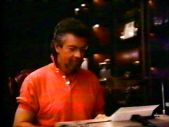
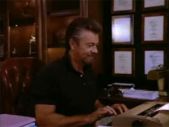
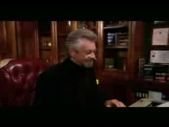
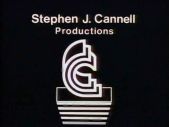
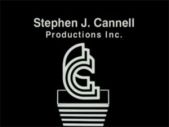

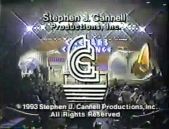
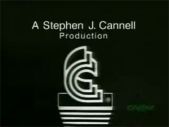
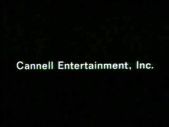
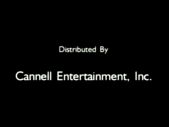
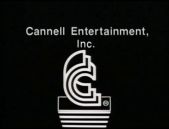
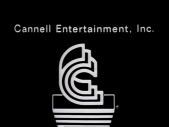
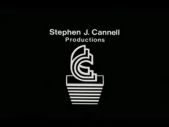
<iframe frameborder="0" height="108" src="http://wikifoundrytools.com/wiki/closinglogos/widget/genericvideo/3f2f0320586866e3f876c9bbb38e1ea3d4109550" width="191"></iframe><embed allowfullscreen="true" height="108" src="http://wikifoundrytools.com/wiki/closinglogos/widget/unknown/3713e289671749741578a963c0809920ad75cf96" type="application/x-shockwave-flash" width="134" wmode="transparent"/><iframe frameborder="0" height="108" src="http://wikifoundrytools.com/wiki/closinglogos/widget/genericvideo/4bc5ac1bedb5ecec9f48169a3109ce7e8e55dbd7" width="191"></iframe><iframe frameborder="0" height="108" src="http://wikifoundrytools.com/wiki/closinglogos/widget/genericvideo/39a3ba9d1dd76fd102179a7ddc3d26adc59cdc9a" width="191"></iframe>
Nicknames: "Guy on Typewriter", "Cannell", "Mr. Cannell and His Typewriter"
Logo: A live-action man (the late Stephen J. Cannell himself) with a pompadour and a beard is typing on an IBM Selectric typewriter in an office/study area with bookshelves and awards galore. The camera then pans clockwise from his face to his back. Once the camera is towards Cannell's back, he throws the paper he is typing on over his head. The paper becomes animated on a black background, and floats downwards towards a stack of animated papers below. The paper "scoops" up the top papers in the stack and forms a "C" as the stack becomes more abstract and the perspective becomes a top-down perspective. The text "Stephen J. Cannell Productions (Inc.)", "A Stephen J. Cannell Production", or "Cannell Entertainment, Inc.", with "Production/Productions (Inc.)/(Inc.)" sliding out from below the company name, is formed above. And depending on the outfit used, here is the list of outfits worn by Mr. Cannell over the years:
Trivia: This logo is parodied at the near end of the music video for the song "DVNO" by Justice, as well on The Simpsons S4 episode "The Front", the Family Guy S2 episode "The Story on Page One", the Parker Lewis Can't Lose final season episode "Write of Die", and the 30 Rock S6 episode "What Will Happen to the Gang Next Year?". The logo also made an appearance during the end credits of the 21 Jump Street movie.
Variants:
FX/SFX: The transition and animation used to "turn" the "real" paper into an animated one.
Music/Sounds: A dramatic tune (written and composed by Mike Post and Pete Carpenter) is played while Cannell types, which contains string-like instruments, French horns, tubular bells and pounding synthesizers. The tone is more soothing when Cannell throws the paper, reaching a climax with a flute or a trumpet. When the "C" forms, ominous horns and flutes played along with the pounding synthesizers used while Cannell types. A guitar plays a four note tune. For the in-credit logo and the TV movie Highway Heartbreaker, it's the end-title theme. On the TV movie A Place for Annie, it's silent.
Music/Sounds Variants:
Availability: Pretty common.
Editor's Note: Everything about the logo is a treat: the concept, the inclusion of both live-action and animation, the memorable tune, the realistic paper transitioning into an animated one, and the logo design. This logo is a favorite of many, and we'll certainly miss Cannell. He will always be remembered for the masterpieces he brought to our televisions.
3rd Logo
(1991-January 14, 1994)
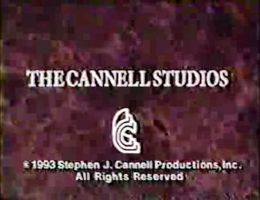 <iframe frameborder="0" height="185" src="http://wikifoundrytools.com/wiki/closinglogos/widget/genericvideo/2092876809fac85776ba4c8476cf96a7ebbbfb6a" width="329"></iframe>
<iframe frameborder="0" height="185" src="http://wikifoundrytools.com/wiki/closinglogos/widget/genericvideo/2092876809fac85776ba4c8476cf96a7ebbbfb6a" width="329"></iframe>
Nicknames: "3D Cannell", "The Cannell Studios"
Logo: On a boysenberry-colored marble background, we see a 3D "silvery" version of the "C" from which we zoom out, along with the 3D text "THE CANNELL STUDIOS" in Times New Roman font tilted at a 90-degree angle, then does a 90-degree turn to face us while the "C" takes its position below the Cannell text. Once the text and the "C" go into their above and below positions, respectively, the "C" quickly flashes, turning everything into 2D. A copyright notice for Stephen J. Cannell Productions, Inc. fades in below the logo after the animation is all done.
FX/SFX: The "C" and text zooming out, and the copyright notice fading in.
Music/Sounds: A dramatic synthesizer tune.
Availability: Extinct. It was only known to be seen on later Caesar's Challenge episodes on NBC and the 1991-92 show Personals. Last seen on Caesar's Challenge on the Canadian channel Game TV when they last aired it.
Editor's Note: Some solid CGI for its time, though the transition from a 3D model to the print logo could've used some work. Regardless, it's a fine logo, but it doesn't stand out as well as its predecessor.
Logo captures by V of Doom, Shadeed A. Kelly, Bob Fish, Eric S., and TheEriccorpinc
Additional edits by V of Doom, bmasters9 and Gabkat2007
Video captures courtesy of JohnnyL80, rhomeo5, and Eric S.
Background: Cannell Entertainment, Inc. (also known as "The Cannell Studios" and formerly "Stephen J. Cannell Productions") was originally started in 1979 by the late writer Stephen J. Cannell after leaving Universal Studios. He was an author and a producer for most shows. In 1986, Cannell with Tri-Star Pictures and Witt/Thomas/Harris Productions created a joint venture distribution called "TeleVentures". On July 11, 1990, Cannell and Tri-Star dissolved TeleVentures and was sold to Cannell and was renamed "Cannell Distribution Co." and Stephen J. Cannell Productions, Inc. was renamed to "Cannell Entertainment, Inc". In 1995, Cannell Entertainment was acquired by New World Communications for $30 million and folded Cannell Distribution Co. into New World Entertainment, and on January 22, 1997, New World was acquired by News Corporation. However in 1998, Cannell re-acquired his library from News Corporation including an 8% distribution fee. The company is still alive and is currently running by Cannell's family after Cannell's death on September 30, 2010, though Cannell worked as a novelist the remainder of his life and served as a creative consultant for the 2010 film, The A-Team with 20th Century Fox, and the final film with Cannell's name on the 2011 film, 21 Jump Street, and was released by Columbia Pictures. The logo was last used on an original series in 1999, when Silk Stalkings ended its long run on the USA Network. Though News Corporation owned Cannell Entertainment at the time of Cannell's death, Cannell owned most of his library with the exceptions of The A-Team, Stone, The Duke, and Black Sheep Squadron (owned by NBCUniversal), Hardcastle & McCormick and Riptide (owned by Sony Pictures Television in the U.S. only), and Hunter (distributed by Sony Pictures Television in the U.S. only. MGM International Television Distribution owns global rights of Hunter through NBCUniversal). On January 24, 2006, The Carsey-Werner Company acquired distribution rights to Cannell's library with the exception of those owned or distributed by major television studios. Carsey-Werner Television currently own domestic and international rights to Cannell's solo-produced series.
1st Logo
(September 23, 1976-April 15, 1981, 1982)
Logo: Just in-credit text saying: "A STEPHEN J. CANNELL PRODUCTION". A copyright stamp is sometimes seen below in the early 1980s.
FX/SFX: None or the scrolling of the credits.
Music/Sounds: The end theme of the show.
Availability: Rare. It was seen on Black Sheep Squadron, Tenspeed and Brown Shoe, Richie Brockelman, Private Eye, the 1981 TV movie Midnight Offerings, and The Greatest American Hero season 1 episode "Reseda Rose", among others. Currently seen on the first season of Black Sheep Squadron on DVD.
Editor's Note: None.
2nd Logo
(March 18, 1981-April 18, 1999, 2004, October 11, 2010)













<iframe frameborder="0" height="108" src="http://wikifoundrytools.com/wiki/closinglogos/widget/genericvideo/3f2f0320586866e3f876c9bbb38e1ea3d4109550" width="191"></iframe><embed allowfullscreen="true" height="108" src="http://wikifoundrytools.com/wiki/closinglogos/widget/unknown/3713e289671749741578a963c0809920ad75cf96" type="application/x-shockwave-flash" width="134" wmode="transparent"/><iframe frameborder="0" height="108" src="http://wikifoundrytools.com/wiki/closinglogos/widget/genericvideo/4bc5ac1bedb5ecec9f48169a3109ce7e8e55dbd7" width="191"></iframe><iframe frameborder="0" height="108" src="http://wikifoundrytools.com/wiki/closinglogos/widget/genericvideo/39a3ba9d1dd76fd102179a7ddc3d26adc59cdc9a" width="191"></iframe>
Nicknames: "Guy on Typewriter", "Cannell", "Mr. Cannell and His Typewriter"
Logo: A live-action man (the late Stephen J. Cannell himself) with a pompadour and a beard is typing on an IBM Selectric typewriter in an office/study area with bookshelves and awards galore. The camera then pans clockwise from his face to his back. Once the camera is towards Cannell's back, he throws the paper he is typing on over his head. The paper becomes animated on a black background, and floats downwards towards a stack of animated papers below. The paper "scoops" up the top papers in the stack and forms a "C" as the stack becomes more abstract and the perspective becomes a top-down perspective. The text "Stephen J. Cannell Productions (Inc.)", "A Stephen J. Cannell Production", or "Cannell Entertainment, Inc.", with "Production/Productions (Inc.)/(Inc.)" sliding out from below the company name, is formed above. And depending on the outfit used, here is the list of outfits worn by Mr. Cannell over the years:
- March 18, 1981-December 11, 1983: Cannell has a dark colored sweater with white collar shirt, plus he is smoking his pipe.
- December 13, 1983-March 20, 1984: Cannell has a blue jean jacket and white flannel shirt over a black turtleneck, plus he is smoking his pipe.
- March 25-December 31, 1984: Cannell has a black jacket and dark colored sweater over white collar shirt (no pipe this time, as he quit smoking in later years).
- January 4, 1985-October 31, 1987: Cannell is wearing a white and gray striped flannel shirt.
- October 1, 1987-1989: Cannell is wearing a casual black polo shirt.
- 1989-December 6, 1996: Cannell is wearing a vermilion polo shirt (with the collar up).
- September 15, 1996-April 18, 1999: Cannell is wearing a black polo. Can be seen on the 6th, 7th, and final season of Silk Stalkings, and the 2nd half of the final season of Renegade starting with the episode "Father's Day".
- 2004, October 11, 2010: Cannell is wearing a black jacket with a black turtleneck.
Trivia: This logo is parodied at the near end of the music video for the song "DVNO" by Justice, as well on The Simpsons S4 episode "The Front", the Family Guy S2 episode "The Story on Page One", the Parker Lewis Can't Lose final season episode "Write of Die", and the 30 Rock S6 episode "What Will Happen to the Gang Next Year?". The logo also made an appearance during the end credits of the 21 Jump Street movie.
Variants:
- In the early years, we just see Stephen typing at the typewriter from the front. He throws the paper up into the air, and the animation sequence continues as usual.
- Occasionally, after we see Cannell toss the paper, the animation cuts awkwardly to the black screen. The 20th Century Fox Television ID (Cannell's parent company) would follow. This was seen on some episodes of Silk Stalkings and Renegade in the early 1990s.
- Same as above, except Cannell gently tosses the paper in front of him instead.
- Of course, this logo was updated often, the main difference is with Cannell wearing different clothes as well as aging over the years, possibly new awards in the office added as well, and even different offices were used. The concept was always the same, as well as the animation. A list of outfits can be seen above.
- On seasons 4-5 of Renegade, the text above the finished logo says "Renegade IV Enterprises", but the live action sequence is intact.
- From 1991-1993, the company was referred to as "Stephen J. Cannell Productions, Inc."
- From 1991-1996 on the 1989 variant, after Cannell takes out his paper from his typewriter, the logo would cross-fade to a black background with the text "Cannell Entertainment Inc.", or for syndication "Distributed By Cannell Entertainment Inc." (in a Gill Sans font), with a small "Distributed By" above the company name.
- There is a sped-up version of the 1985 and 1987 versions of this logo where the camera moves fast for the two short 1987 logo themes, which were used on early to later season two episodes of 21 Jump Street starting with the episode "Besieged: Part 2".
- There is also a short version that only features the last half of the animation of the logo. Used on The Commish and the 1994 TV movie A Place for Annie.
- On early episodes and the pilot of Caesars Challenge, the logo appears as an in-credit logo.
- On the Riptide season 3 episode "Home for Christmas", there is a still variant, bypassing the usual animation playing in this logo.
- On a RTL9 airing of Hardcastle and McCormick S3 episode "A Chip Off the Ol' Mit", the credits were time compressed, speeding up the logo in the process. Also, the closing music played over it.
- Cannell Tribute: On the Castle episode "Punked", the 2004 logo is shown. While Cannell is typing, the text "STEPHEN J. CANNELL" fades in above and below the text "COLLEAGUE, MENTOR, FRIEND." fades in. As Cannell tosses the paper in the air, the logo fades to the black background as the paper falls. The text in the center "WE'LL MISS YOU, PAL." fades in as the animated paper continues to fall.
FX/SFX: The transition and animation used to "turn" the "real" paper into an animated one.
Music/Sounds: A dramatic tune (written and composed by Mike Post and Pete Carpenter) is played while Cannell types, which contains string-like instruments, French horns, tubular bells and pounding synthesizers. The tone is more soothing when Cannell throws the paper, reaching a climax with a flute or a trumpet. When the "C" forms, ominous horns and flutes played along with the pounding synthesizers used while Cannell types. A guitar plays a four note tune. For the in-credit logo and the TV movie Highway Heartbreaker, it's the end-title theme. On the TV movie A Place for Annie, it's silent.
Music/Sounds Variants:
- November 4, 1981-January 13, 1982: There is a very rare music variant that appeared starting with The Greatest American Hero season 2 episode "The Two-Hundred-Mile-an-Hour Fastball", which contains a xylophone, violins, and a very different four-note guitar ending theme, which sounds similar to the show's theme song.
- November 25, 1981-February 8, 1983: A dramatic three-note horn fanfare plays first, followed by a rousing orchestra and six notes played by a guitar.
- 1983-September 27, 1987: A rearranged version of the 1981 theme, but sounds much more dramatic, which contains violins playing while the familiar six-note theme plays. Last used on the 21 Jump Street season 2 episode "Besieged: Part 1".
- January 4, 1985-September 24, 1987: A combination of the first half of the November 1981 Cannell logo theme from The Greatest American Hero from season 2 and the much dramatic second half of the original 1981 logo theme. It was first used on the Hunter season 1 episode "The Shooter" and last used on the Wiseguy season 1 episode "New Blood".
- September 24, 1987-October 20, 1990, 2004, October 11, 2010: A Malibu-style guitar plays the four note tune, which was first used on the Hunter season 4 episode "Not Just Another John Doe". A short edited version of this exists of this logo theme having the first three notes, followed by the fourth dramatic note and the remaining 6 note theme. 21 Jump Street continued to use this theme until 1990.
- October 3-17, 1987, October 26, 1988-April 18, 1999: Another variant using a piano, guitar, bells, and orchestration playing at the same time, with a flute sound before the rousing music plays, and later a guitar playing the last notes of the theme. It was used as early as the Hunter season 4 episodes "Playing God" and "The Jade Woman". There was a short version of this back on October 18, 1987 on the 21 Jump Street season 2 episode "After School Special", and another featuring the last half of this theme on Profit. On the first season of Renegade, the orchestration is excluded.
Availability: Pretty common.
- It's still saved on Cannell's shows when reran, especially The A-Team on COZI TV, Hunter, Renegade, The Commish, and 21 Jump Street, all on H&I.
- Also seen on the reruns of Hunter and DVD releases of 21 Jump Street, Riptide, Hunter, Silk Stalkings, The Greatest American Hero, The A-Team, Hardcastle and McCormick (the Hardcastle releases are from VEI of Toronto, Ontario in Canada), and Wiseguy.
- The in-credit text of Cannell Entertainment is extinct and was seen on TV movies such as Living a Lie and Highway Heartbreaker.
- The in-credit logos of Stephen J. Cannell Productions are also extinct and were seen on the pilot and early episodes of Caesar's Challenge.
- The 2004 version is rare and seen on a few DVD releases of The Greatest American Hero.
Editor's Note: Everything about the logo is a treat: the concept, the inclusion of both live-action and animation, the memorable tune, the realistic paper transitioning into an animated one, and the logo design. This logo is a favorite of many, and we'll certainly miss Cannell. He will always be remembered for the masterpieces he brought to our televisions.
3rd Logo
(1991-January 14, 1994)
 <iframe frameborder="0" height="185" src="http://wikifoundrytools.com/wiki/closinglogos/widget/genericvideo/2092876809fac85776ba4c8476cf96a7ebbbfb6a" width="329"></iframe>
<iframe frameborder="0" height="185" src="http://wikifoundrytools.com/wiki/closinglogos/widget/genericvideo/2092876809fac85776ba4c8476cf96a7ebbbfb6a" width="329"></iframe>Nicknames: "3D Cannell", "The Cannell Studios"
Logo: On a boysenberry-colored marble background, we see a 3D "silvery" version of the "C" from which we zoom out, along with the 3D text "THE CANNELL STUDIOS" in Times New Roman font tilted at a 90-degree angle, then does a 90-degree turn to face us while the "C" takes its position below the Cannell text. Once the text and the "C" go into their above and below positions, respectively, the "C" quickly flashes, turning everything into 2D. A copyright notice for Stephen J. Cannell Productions, Inc. fades in below the logo after the animation is all done.
FX/SFX: The "C" and text zooming out, and the copyright notice fading in.
Music/Sounds: A dramatic synthesizer tune.
Availability: Extinct. It was only known to be seen on later Caesar's Challenge episodes on NBC and the 1991-92 show Personals. Last seen on Caesar's Challenge on the Canadian channel Game TV when they last aired it.
Editor's Note: Some solid CGI for its time, though the transition from a 3D model to the print logo could've used some work. Regardless, it's a fine logo, but it doesn't stand out as well as its predecessor.
